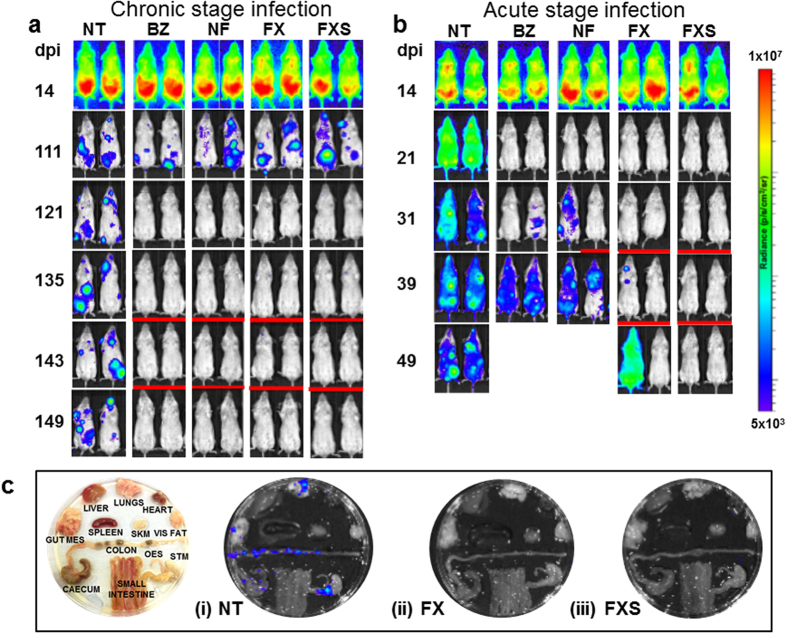Figure 1.
Treatment of chronic (a) and acute (b) stage Trypanosoma cruzi infections with nitroheterocyclic drugs assessed by in vivo imaging. BALB/c mice, infected with bioluminescent CL Brener parasites, were treated once daily by oral gavage for 5 days at 100 mg kg−1 with benznidazole (BZ), nifurtimox (NF), fexinidazole (FX), or fexinidazole sulfone (FXS). Treatment was initiated 114 days (chronic) or 14 days (acute) post-infection (see Table 1 for numbers of mice). Representative ventral images of 2 mice are shown for each drug, at various points post-infection. NT, non-treated (vehicle only). Mice with low/background levels of bioluminescence were immunosuppressed by cyclophosphamide (Methods), starting 135 or 31 days post-infection and are underlined with a red bar. All acute stage mice treated with BZ or NF were non-cured, and only immunosuppressed where necessary to confirm outcome. In acute stage infections, examples of both curative and non-curative outcomes with FX are shown. (c) Assessment of drug activity against acute stage infections by ex vivo imaging. Representative images of organs/tissues isolated 50 days post-infection (Methods) from NT (i), FX-treated (ii) and FXS-treated (iii) mice are shown. The locations of specific organs/tissues are illustrated in the left-hand image. The heat-map is on a log10 scale and indicates intensity of bioluminescence from low (blue) to high (red); the minimum and maximum radiances for the pseudocolour scale are shown.

